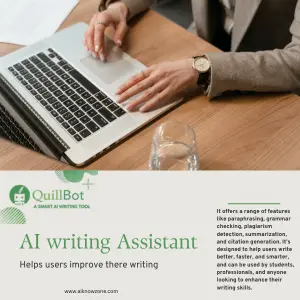
CursorLens
Discover how CursorLens enhances AI-assisted coding by providing insights, usage tracking, and model control for the Cursor.sh IDE. An open-source dashboard to log Cursor code generations, track usage, and control AI models.
Description
CursorLens Review: The Ultimate AI Coding Companion? 🤔
Okay, so I recently stumbled upon CursorLens, and let me tell you, it’s a game-changer for anyone knee-deep in AI-assisted coding with the Cursor.sh IDE. Seriously, if you’re using Cursor for your coding projects, you NEED to know about this. CursorLens is essentially an open-source dashboard that gives you superpowers over your AI interactions. Think of it as mission control for your AI coding sessions. It lets you log all your AI code generations, keep tabs on how you’re using different AI models, and even control those models directly, including the local ones. This isn’t just some fancy add-on; it’s a full-blown insights engine that helps you optimize your entire AI-assisted coding workflow. I mean, who wouldn’t want to track every single AI interaction and gain valuable insights into how their models are performing? The fact that it’s open-source is a huge plus too, because it means the community is constantly improving it, and you can even contribute yourself if you’re feeling ambitious. Whether you choose to run it locally or wait for the upcoming hosted version, CursorLens promises a new level of control and visibility into your AI-powered coding process. It’s not just about writing code faster; it’s about writing smarter.
Key Features and Benefits 🤩
- AI Code Generation Logging: This feature is gold! You can meticulously log every single AI code generation, providing an invaluable audit trail and a chance to analyze what works and what doesn’t. It’s like having a detailed history book of your AI interactions.
- Usage Tracking: Ever wondered which AI models you’re leaning on the most? CursorLens tracks your usage patterns, helping you identify bottlenecks and optimize your model choices. It helps ensure you’re using the right tool for the right job.
- AI Model Control: Take command of your AI models! CursorLens lets you control different AI models, including local ones, giving you unparalleled flexibility and customization options. This is especially useful for those who like to experiment with different models to see which ones perform best for specific tasks.
- Caching Support: As of recently, CursorLens also supports caching for Anthropic! Now the system and context messages in CMD+L and CMD+i chats will be cached. Note that TTL for the cache is 5 minutes.
How It Works (In a Nutshell) 🥜
Using CursorLens is surprisingly straightforward. First, you need to get it up and running, either locally or wait for the hosted version. Once it’s installed, you configure Cursor to use CursorLens as its API endpoint by overriding the OpenAI Base URL. Then, choose your preferred GPT model. After that, it’s business as usual – you use Cursor for AI-assisted coding just like you normally would. The magic happens behind the scenes, with CursorLens logging your interactions and collecting data. To see all the insights, you simply visit the CursorLens dashboard. It’s that easy! From there, you can view logs, statistics, and insights to optimize your coding workflow. The dashboard is intuitive and well-organized, making it easy to find the information you need. Plus, the open-source nature of the project means that you can customize it to fit your specific needs if you’re so inclined. This process, in a very seamless manner, empowers you with data-driven insights without disrupting your existing coding habits. Remember that you have to run `npm install`, and then `npm run dev` to start the program.
Real-World Use Cases for CursorLens 🛠️
- Debugging Nightmares: I once spent hours trying to debug a particularly nasty piece of code generated by an AI model. With CursorLens, I could go back and review the exact prompts and responses that led to the problematic code, making the debugging process much faster and less frustrating.
- Model Performance Analysis: I was curious to see which AI model was performing best for generating boilerplate code. CursorLens allowed me to track the performance of different models and identify the one that consistently produced the most efficient and accurate results.
- Cost Optimization: By tracking my usage of different AI models, I was able to identify areas where I could optimize my spending. For example, I discovered that one model was significantly more expensive than another for similar tasks, prompting me to switch to the more cost-effective option.
Pros of CursorLens 👍
- Open-source and community-driven 🤝
- Provides detailed insights into AI-assisted coding sessions 📊
- Allows for control and customization of AI models ⚙️
- Helps optimize AI model usage and cost 💰
Cons of using CursorLens 👎
- Still in alpha, so expect some bugs 🐛
- Requires some technical knowledge to set up locally 🤓
- Dashboard UI could be more polished (but it’s improving!) ✨
CursorLens Pricing 💰
Since CursorLens is an open-source project, it’s currently free to use! However, keep an eye out for potential hosted versions in the future, which may come with subscription fees.
Conclusion 🎉
In conclusion, CursorLens is a must-have tool for anyone serious about AI-assisted coding with the Cursor.sh IDE. It provides invaluable insights into your AI interactions, empowering you to optimize your workflow and write smarter code. While it’s still in alpha and requires some technical know-how to set up, the benefits far outweigh the drawbacks. If you’re a developer looking to take your AI coding game to the next level, give CursorLens a try – you won’t be disappointed! I highly recommend it to any Cursor user who wants to maximize the potential of AI in their coding endeavors. Happy coding! 😎





Reviews
There are no reviews yet.